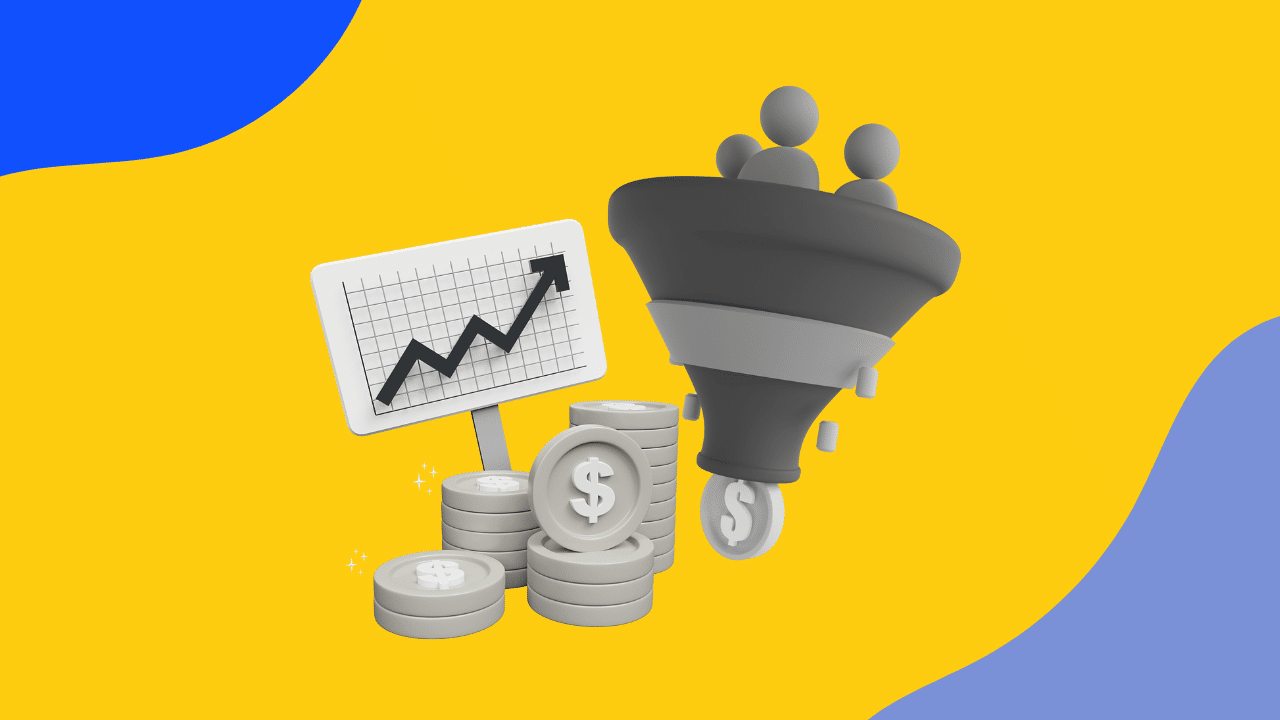
- SEO Strategy, Search Engine Optimisation, Local SEO Strategy
Recent articles
our mailing list
SEO for Small to Medium-Sized Businesses – A Comprehensive Guide For 2024

Having a website for your business is a must these days, however there’s no point having one if no one sees it. That’s where Search Engine Optimisation (SEO) comes in. Whether you’re a budding startup or an established business looking to expand your online footprint, search engine optimisation for small businesses and medium size businesses can help get a service or brand seen and heard.
SEO might seem daunting, especially amidst the ever-evolving algorithms and technical jargon. However, this SEO guide is designed to demystify the process and offer clear, actionable strategies that are especially effective for smaller or medium sized businesses. Whether you are looking to increase traffic, improve your search engine rankings, or convert visitors into loyal customers, understanding the basics of SEO is the first step.
Throughout this guide, we will walk you through the essentials of SEO, from understanding what it really means to implementing practical and effective tactics that yield results. This isn’t just about attracting more clicks; it’s about securing the right clicks that lead to increased engagement and sales.

Understanding SEO
Search Engine Optimisation (SEO) is the process of optimising your website to ‘rank’ higher in search engine results pages, thereby increasing the amount of organic (or free) traffic your website receives. The channels that benefit from SEO include websites, blogs, and infographics, among others.
There are several aspects of SEO, from the words on your page to the way other sites link to you on the web. Sometimes SEO is simply a matter of making sure your site is structured in a way that search engines understand. In this guide, we will discuss strategies on how medium and small businesses SEO can be improved and perfected for your brand.
Why is SEO Important?
SEO is fundamental for any business that operates online, but it’s especially crucial for small to medium-sized businesses. This is because it provides an opportunity to compete with larger competitors by making your site more visible and more appealing to potential customers. Here are a few reasons why SEO is indispensable:
- Increased Visibility: The higher you rank on a search engine results page (SERP), the more likely potential customers will see you and click through to your site.
- Cost-Effective Marketing: Unlike paid advertising, SEO is relatively cost-effective, with your investment going into improving your website and monitoring your traffic.
- Enhanced User Experience: SEO involves making your site better for people too. Ensuring that your site is navigable, breaks down information efficiently, and loads quickly will not only boost your SERP ranking but also keep customers coming back for more.
- Long-Term Strategy: While SEO results take time, the effort can produce a sustained and visible impact on your business’s growth and online presence.
How Does SEO Work?
At its core, SEO works by demonstrating to search engines that your content is the best result for the topic at hand. This involves things like indexing, keywords, internal and external links, and user optimised content to assist search engines like Google or Bing to find content, and rank websites higher on search engine results pages (SERPs). SEO can help small businesses in many ways, but to help you understand this complex process a little easier, here’s some of the steps search engines take to read your website and content to get it out to the right people:
- Crawling: Search engines use programs called ‘crawlers’ or ‘spiders’ to discover publicly available content on the web. These crawlers visit web pages, download them, and then follow the links on these pages to discover new pages. This allows them to build up a massive index of all the content they’ve found and where it’s located.
- Indexing: Once a page has been crawled, it’s stored in a giant database called an index. This index is updated whenever the search engine crawls your website and finds new or revised web pages. To be indexed effectively, your content needs to be visible to the crawlers — meaning it should be text-based and not hidden behind login forms or embedded in images or video files.
- Processing Queries: When a user types a query into a search engine, the engine accesses its index to find matching pages. It uses algorithms to determine which pages are most likely to answer the user’s query. This decision is based on multiple factors including keywords, site usability, and sometimes even user location.
- Algorithms: Search engines use complex algorithms to rank the indexed pages. These algorithms are the core of SEO and are based on different SEO factors including keyword presence and density, link quality, site structure, site speed, mobile usability, user experience, and more. Over time, these algorithms are updated to keep up with changing user behaviours and technological advancements.
- Ranking: After processing the information, the search engine ranks the results in order of relevance to the query. This ranking is based on a combination of hundreds of different ranking signals. SEO involves optimising these signals so that the search engine considers a website as more relevant or more authoritative compared to others.
The SERP Explained
When a user searches for something online, search engines like Google return what they believe are the most appropriate results based on the search terms. These results are displayed on a SERP, which includes both organic results and paid advertisements. The organic results are those that are influenced by SEO, while the paid spots are shown as ads. Being visible on the first page of organic results is crucial because it is synonymous with higher trust, more clicks, and increased user interaction.
Understanding the basics of SEO and how search engines like Google view your site isn’t just about building search engine-friendly websites. It’s about making your site better for people too. As we move forward, we’ll dive deeper into the mechanics of SEO and how you can apply these to enhance your digital presence effectively.
Core Components of SEO
There are three core components of SEO: on-page SEO, off-page SEO, and technical SEO. Now, no need to panic—we know that sounds intense, but it’s not too difficult to understand once you see the bigger picture. All of these fall under the SEO umbrella; these are simply the largest subgroups within the field.Effective SEO marketing for small businesses involves optimising these components.
On-page SEO
Arguably the best SEO strategy for small companies aiming to improve their online presence is on-page SEO. This involves all the measures you can take directly within your website to improve its position in the search rankings. This includes optimising your content, the HTML structure, and the overall architecture of your site. Here’s how you can effectively enhance these elements:
- Content Creation and Optimisation: Create high-quality content that addresses your audience’s questions and needs. Use your targeted keywords naturally and ensure your content is structured well, using headings and subheadings to make information easy to digest.
- HTML Tags and Structure: Utilise HTML tags to help search engines understand the structure and content of your pages. This includes using title tags that accurately describe the page content, meta descriptions that act as compelling ad copy in search results, and header tags (H1, H2, etc.) to signify headings and subheadings.
- URL Structure: Implement a URL structure that is concise and includes keywords where relevant. This not only helps with SEO but also improves the user experience.
- Image and Video Optimisation: Ensure all images and videos are optimised for fast loading. Use descriptive file names and alt text for images, helping search engines understand what the media is about and improving accessibility.
Technical SEO
Technical SEO refers to the aspects of your website that impact its ability to be crawled and indexed effectively by search engines:
- Site Speed and Performance: Improve the loading times of your pages since speed is a ranking factor. Tools like Google PageSpeed Insights can be used to test and enhance your site speed.
- Mobile Optimisation: Ensure your site is responsive and provides a good user experience on mobile devices, critical since Google’s shift to mobile-first indexing.
- Secure Sockets Layer (SSL) and HTTPS: Implement SSL to secure your site connections through HTTPS, which is not only a ranking factor but also essential for maintaining user trust.
- Sitemaps and Robots.txt: Use sitemaps to help search engines find and index your pages. Robots.txt files tell search engine bots which pages or sections of your site they should not visit and index.
Off-Page SEO
Off-page SEO involves external factors that impact your site’s ability to rank well in search engines. Some of these strategies (which we’ll go more into-depth later on) can include:
- Backlinks: The primary component of off-page SEO is building backlinks. High-quality backlinks from reputable websites signal to search engines that your content is valuable and credible, which can significantly boost your site’s ranking.
- Social Media: Utilise social media to enhance your SEO efforts. While social media signals do not directly impact search rankings, they can amplify the reach of your content and increase the chances of getting linked by other sites.
- Local SEO: Focus on local SEO strategies like optimising your Google My Business listing and gaining local backlinks to target customers in your geographical area. This is particularly important for small businesses looking to attract nearby customers.
Keyword Research
Keywords are words or phrases that people enter into search engines to find information. They are the cornerstone of any SEO strategy because they help dictate your content and ensure it aligns with what your audience is searching for. Understanding the types of keywords—like short-tail, long-tail, and local keywords—is crucial for targeting the right audience
Keyword research is foundational to the success of SEO. It helps you understand the terms your potential customers are using to find your products or services. This section will guide you through the basics of keywords, the tools you can use for research, and strategies for selecting the most effective keywords.
Keyword Selection Strategy
Selecting the right keywords is more art than science, requiring you to balance several factors:
- Search Volume: Opt for keywords that have enough searches to drive traffic but not so competitive that ranking for them is unrealistic. You want a good mix of ‘head’ terms (broad, high-traffic terms) and ‘long-tail’ terms (more specific, lower-traffic terms).
- Relevance: Ensure the keywords are highly relevant to your content. They should accurately reflect the topics you address, as this increases the likelihood of attracting engaged traffic.
- Competition: Evaluate how difficult it will be to rank for the keywords. For smaller businesses, targeting less competitive keywords can be a more practical approach.
- Intent: Understand the intent behind the keywords. Are searchers looking to buy, or are they just looking for information? Tailoring your content to meet these intents can enhance your chances of conversion.
Start by brainstorming a list of topics related to your business and then use keyword research tools to refine your selections based on these criteria.
Tools and Techniques
The cost of SEO for a small business or medium business is often low. The only thing we’d recommend paying for are one or more of these tools which can aid in your keyword research by providing insights into search trends, competition levels, and keyword suggestions:
- Google Keyword Planner: A free tool that offers data on keyword search volume and competition, particularly useful for those running Google Ads.
- Ahrefs: Offers a comprehensive keyword tool that provides data on the keywords your competitors are ranking for, potential traffic from keywords, and insights into the difficulty of ranking.
- SEMrush: Known for its detailed keyword analytics, including trend analysis, keyword difficulty, and the types of SERP features that appear for each keyword.
These are some of the best SEO services and tools for small businesses and medium businesses to use for their SEO strategies. They will help you generate a list of keywords based on real search data and provide a deeper understanding of your industry’s keyword demand.
This strategy-focused approach ensures that when you begin integrating these keywords into your site’s content and meta tags, you’re optimally positioned to climb the SERPs and attract your target audience effectively.

Content Marketing
Content marketing is the strategic process of creating and distributing valuable, relevant, and consistent content to attract and engage a clearly defined audience — with the objective of driving profitable customer action. For SMEs, deploying content marketing effectively can supercharge your SEO efforts, enhancing your online visibility and fostering meaningful engagement.
Regularly updated content such as blog posts, videos, and infographics not only enriches your site’s appeal but also signals to search engines that your site is a current source of valuable information. This approach can dramatically boost your search rankings and position your brand as an authority in your field.
Types of Content
1. Blog Posts and Articles
Best for: Both B2C and B2B
Why: Regularly updated blog posts provide fresh content that search engines love, addressing topics from industry news to how-to guides. They’re fantastic for incorporating keywords naturally and keeping your audience coming back for more.
2. Infographics
Best for: Both B2C and B2B
Why: Infographics can distil complex data into digestible, shareable visuals, perfect for drawing in traffic and encouraging backlinks, which are gold for SEO.
3. Videos
Best for: B2C (particularly effective), also B2B
Why: Videos can dramatically improve the time spent on your site by providing engaging, easy-to-consume content. Whether it’s tutorials, behind-the-scenes looks, or customer testimonials, videos are a versatile tool to enhance user engagement.
4. Case Studies
Best for: B2B (particularly effective), but also B2C
Why: Case studies are powerful in B2B contexts, where detailed narratives showcasing problem-solving can significantly influence purchasing decisions. They also increase your keyword integration opportunities and boost your site’s credibility.
5. eBooks and Whitepapers
Best for: B2B
Why: These are excellent for deep dives into subjects, attracting leads through detailed, expert content. They’re also prime for gathering contact details when offered as a download in exchange for an email address.
Building Backlinks
Backlinks,often referred to as ‘inbound links’ or ‘incoming links,’ are links from one website to a page on another website. They are among the most significant factors considered by search engines when ranking sites. Essentially, each backlink is seen as a vote of confidence from one site to another, indicating the content’s reliability and relevance. The more high-quality backlinks your site accumulates, the higher your site’s authority grows, which can significantly improve your visibility in search engine results pages (SERPs). Previously mentioned tools like Semrush or ahrefs are useful for developing, researching and strategising.
Backlinks are important for several reasons:
- Search Engine Optimisation: Search engines like Google use backlinks as endorsements. A higher number of quality backlinks can lead to better rankings.
- Website Authority: Backlinks from reputable sites increase your site’s perceived expertise, authoritativeness, and trustworthiness.
- Referral Traffic: Backlinks also drive traffic directly from other websites, which can lead to an increase in potential customers.
Strategies for Building Backlinks
- Content Creation & Promotion: Create compelling, unique, and high-quality content that others want to link to. Promote this content across your networks to increase its visibility.
- Guest Blogging: Writing articles for other relevant blogs can provide valuable backlinks. It’s a mutual benefit, as the host site gets free content, and you get exposure and a backlink.
- Broken Link Building: This involves finding broken links on other websites and suggesting your content as a replacement. It’s helpful for the site owner and provides you with a backlink opportunity.
- Collaborations and Partnerships: Collaborate with other businesses and influencers in your industry. These relationships can lead to natural backlink opportunities through shared projects and content.
- Testimonials and Case Studies: Offering to write a testimonial for a product or service you use can be a good way to get a backlink from a corporate site.
- Social Media Engagement: While social media links themselves are typically ‘nofollow’ and do not impact search engine rankings, they can lead to increased visibility and natural backlink opportunities from other sites.
- Directories and Resource Lists: Submitting your site to relevant directories and being included in resource lists can also provide backlinks. Focus on those directories that are authoritative and relevant to your industry (again tools like Semrush are helpful for checking this).
Measuring SEO Success
Now if you’re still wondering, is SEO worth it for my small business? Then we need to highlight how SEO is nearly always worth it, as long as you understand how to measure the success of your SEO strategies. This is crucial to determining their effectiveness and identifying areas for improvement. While SEO can sometimes feel like navigating in the dark, various tools and metrics can shine a light on your progress and guide your future strategies.
Key Metrics to Monitor
- Traffic Volume: One of the most straightforward indicators of SEO success is an increase in the number of visitors to your site. Tools like Google Analytics provide detailed reports on your website traffic, including the number of visits, pages viewed per session, and the duration of each visit.
- Conversion Rates: Traffic is valuable, but converting visitors into customers is the ultimate goal. Tracking how many visitors complete a desired action, such as making a purchase or signing up for a newsletter, can help you gauge the effectiveness of your SEO efforts.
- Keyword Rankings: Monitoring where your keywords rank in search engine results pages (SERPs) is essential. Improvements in rankings are a positive sign that your SEO strategies are working. Tools such as SEMrush or Ahrefs can help track your rankings over time.
- Bounce Rate: The bounce rate indicates the percentage of visitors who leave your site after viewing only one page. A high bounce rate might suggest that your site isn’t relevant to their needs, or that the user experience is lacking.
Regularly Reviewing and Adapting Your SEO Strategy
SEO for medium-sized businesses and small businesses demands persistence and adaptability. It’s a dynamic field influenced by changing search engine algorithms, competitor actions, and evolving user behaviours. Regular audits and updates are not just beneficial; they are necessary to maintain and improve your search engine rankings over time.
- Schedule Regular Audits: Establish a routine, whether monthly or quarterly, to review your SEO performance comprehensively. These audits should encompass all key metrics, including traffic volumes, keyword rankings, backlink quality, and content effectiveness.
- Analyse the Data: Use tools like Google Analytics and Google Search Console to dive deep into your website’s performance. Look for trends such as increases in traffic sources, improvements or declines in keyword rankings, and changes in user engagement metrics. Compare these trends with the actions you’ve taken, such as new content or changes to your website structure, to correlate what works and what doesn’t.
- Identify Areas for Improvement: Each audit should result in actionable insights. For example, if certain pages have high bounce rates, consider revising the content or improving the user experience on those pages. If a set of keywords isn’t performing well, research new keywords or adjust the existing content to better target those terms.
Implementing Changes
- Update Content Regularly: The relevance of your content can decay over time. Updating old posts with fresh information and current keywords can revitalise their performance and extend their lifespan.
- Optimise for New Keywords: As market dynamics and customer interests change, new keyword opportunities will emerge. Incorporating these new keywords into existing content or creating new content to address them can help capture additional traffic.
- Enhance User Experience: SEO isn’t just about keywords and backlinks; it’s also about how users interact with your site. Improving loading times, making navigation more intuitive, and ensuring mobile responsiveness are all crucial for keeping your site competitive.
- Expand Your Backlink Profile: Continually seek new backlink opportunities to strengthen your site’s authority. This could involve reaching out to new partners, creating link-worthy content, or engaging in community or industry forums.
Search engines frequently update their algorithms to improve the relevance and quality of search results. These changes can dramatically affect your site’s ranking. Staying informed about these updates and adjusting your SEO strategy accordingly is crucial. For example, if a new algorithm prioritises user experience metrics like mobile usability or safe browsing, you would need to quickly ensure your site aligns with these criteria to maintain your rankings.
To Wrap-up
Navigating the complex world of SEO can seem daunting, but armed with the right strategies and knowledge, small to medium-sized enterprises (SMEs) can significantly enhance their online visibility and attract more traffic. In this complete SEO guide we’ve explored the essential elements of SEO, from mastering keyword research and leveraging the power of content marketing, to building a robust backlink profile and regularly measuring and adapting your strategies for continued success.
You can build your own effective SEO strategy using this guide and other free resources online, however there are many effective SEO services for small businesses and medium sized businesses that can simplify this process by providing expert guidance on essential tactics like on-page optimisation, content strategy, and technical SEO adjustments.
Need help with your SEO or want more guidance on your businesses SEO needs? Feel free to contact us today.

Article by
Simon Gould
CEO / Founder / Dad
Founder and leader, Simon established SDM back in 2012. Since then, he has helped 150 clients (and counting) to achieve their digital goals.[…]







